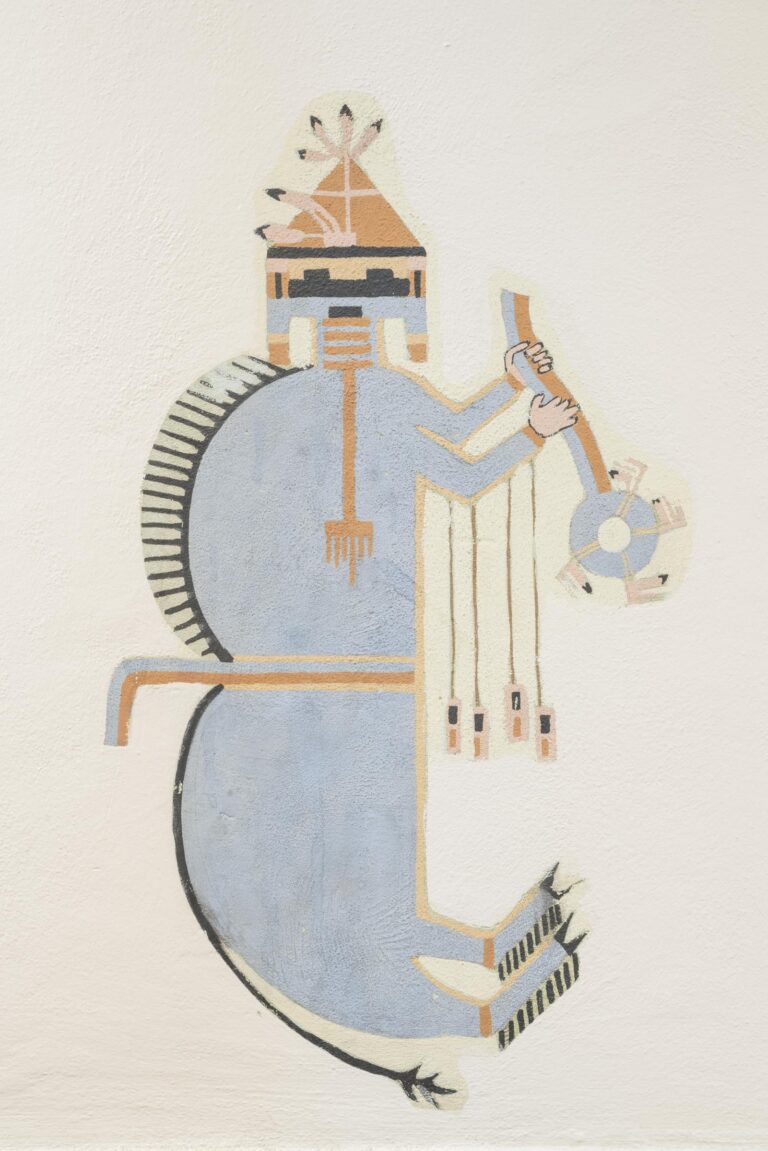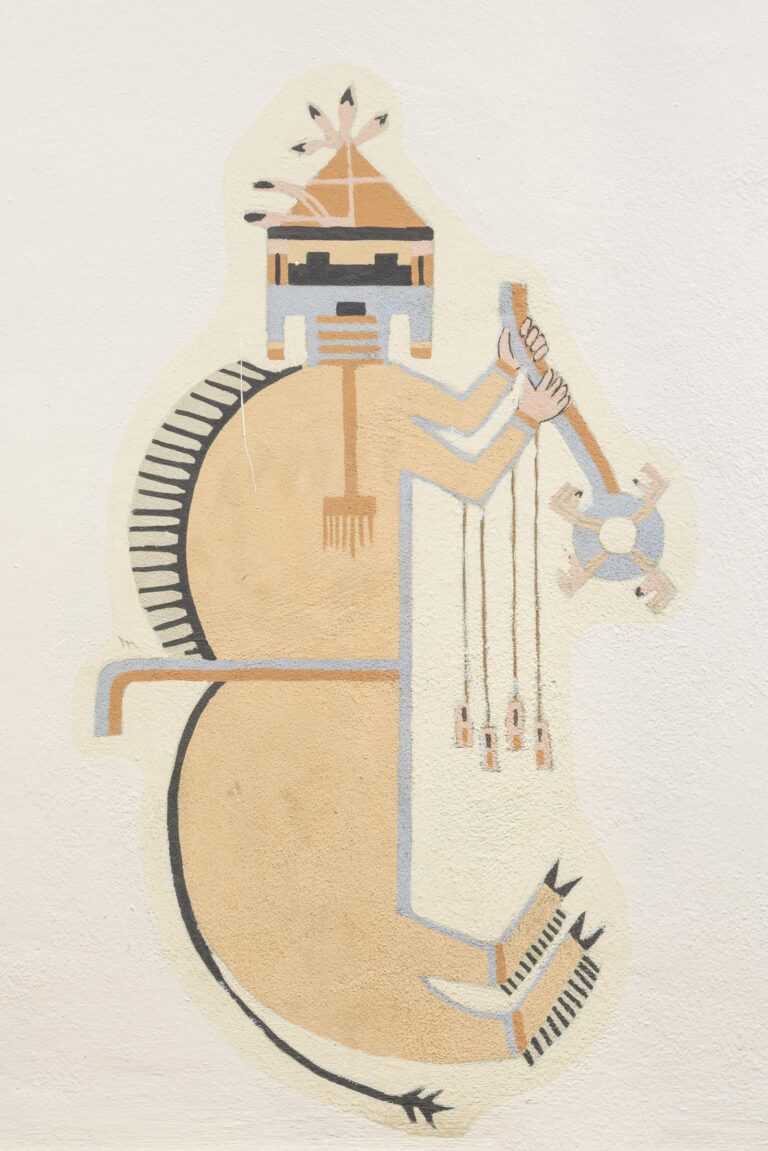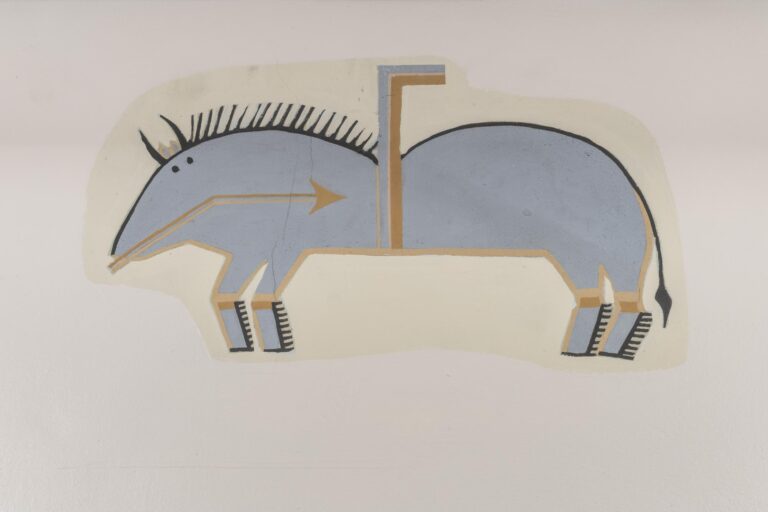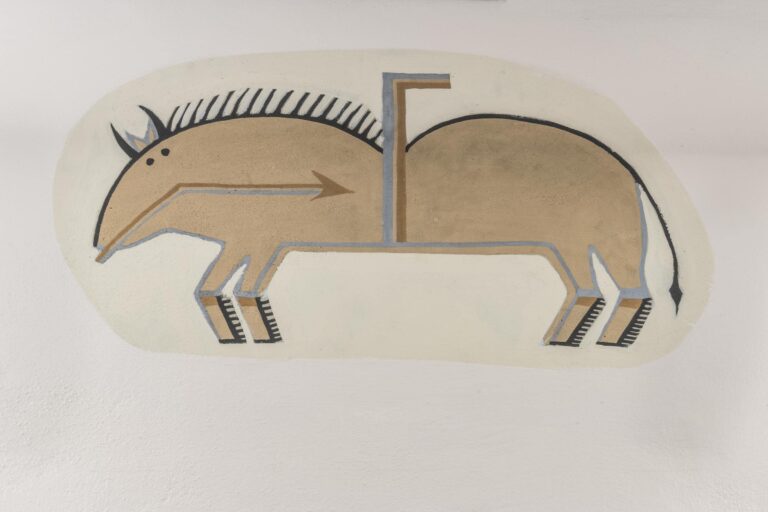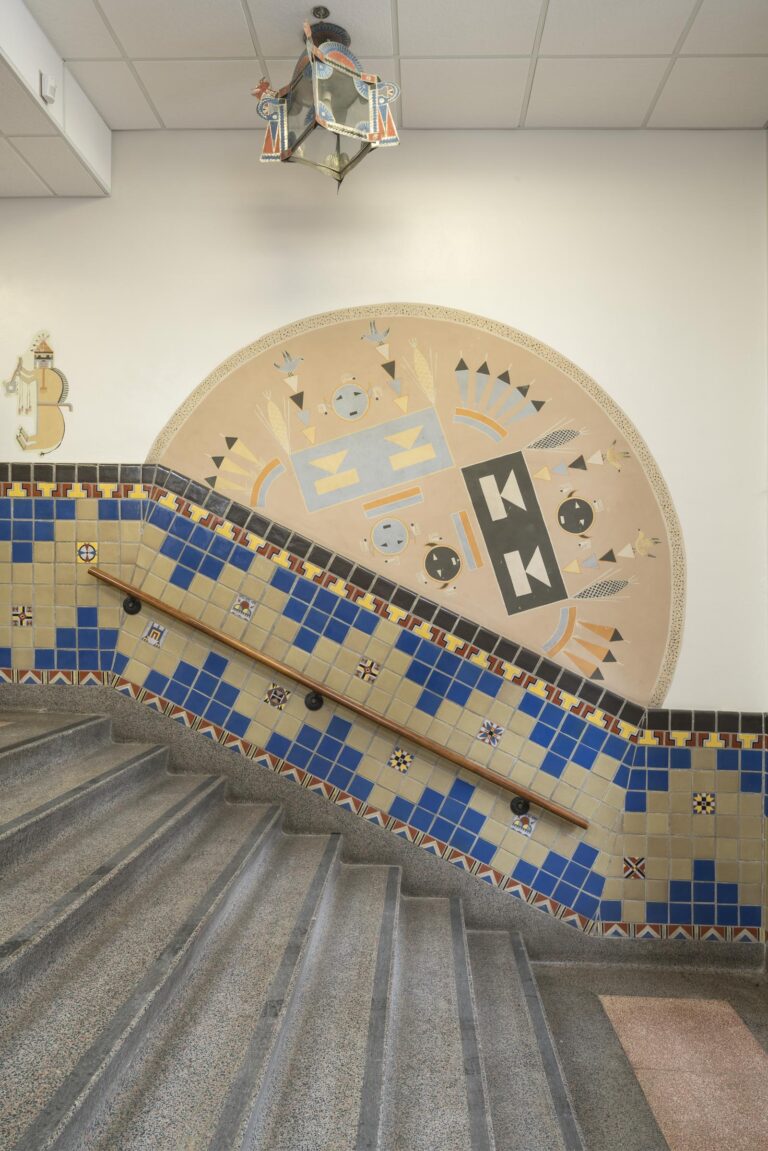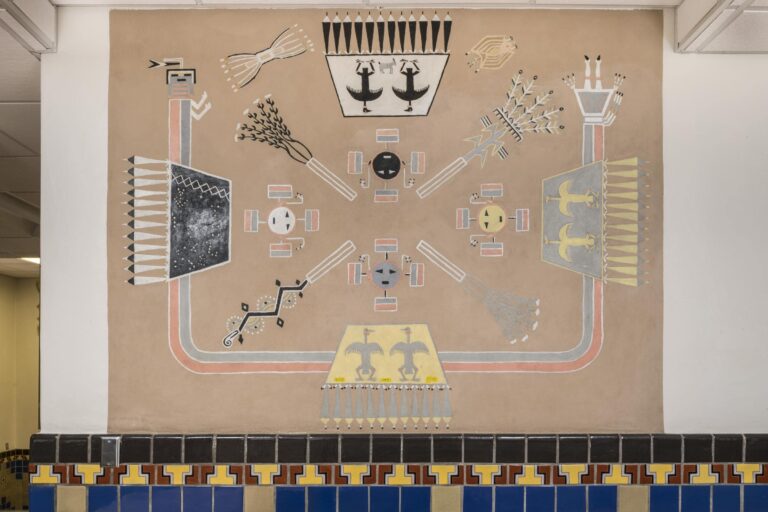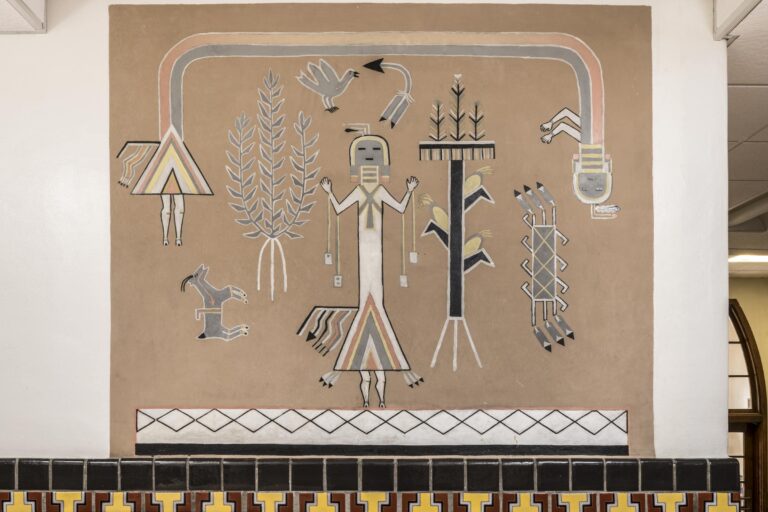In 1939, according to a newspaper report, “state art directors . . . made provision for selection of a young Navajo painter to aid with the murals for the new McKinley county [sic] courthouse”1 (the now-historic McKinley County Courthouse was built with New Deal funding and opened in 1939). The same article explains that the plan was for “the Navajo painter [to] aid in a sandpainting reproduction on the ceiling of the entrance hall.” The wall painting seen here most closely fits that specific description. It is painted on the ceiling under the second-floor staircase in the building’s back entryway. Because the stairway divides into two at the landing, there is an identical painting on the ceiling across the stairwell.2 The artist created sandpainting pairs throughout the entire first floor, paying particular attention to flanking entrances, lobbies, and passageways with matching sandpainting designs in order, it seems, to bestow the space with protection and blessings.
The design seen here is likely an anthropomorphized “thunder being.” It is generally understood that the zigzag arrows emanating from the head and left hand of the figure represent the sound and reverberation of thunder, while its feet represent storm clouds emitting lighting.



